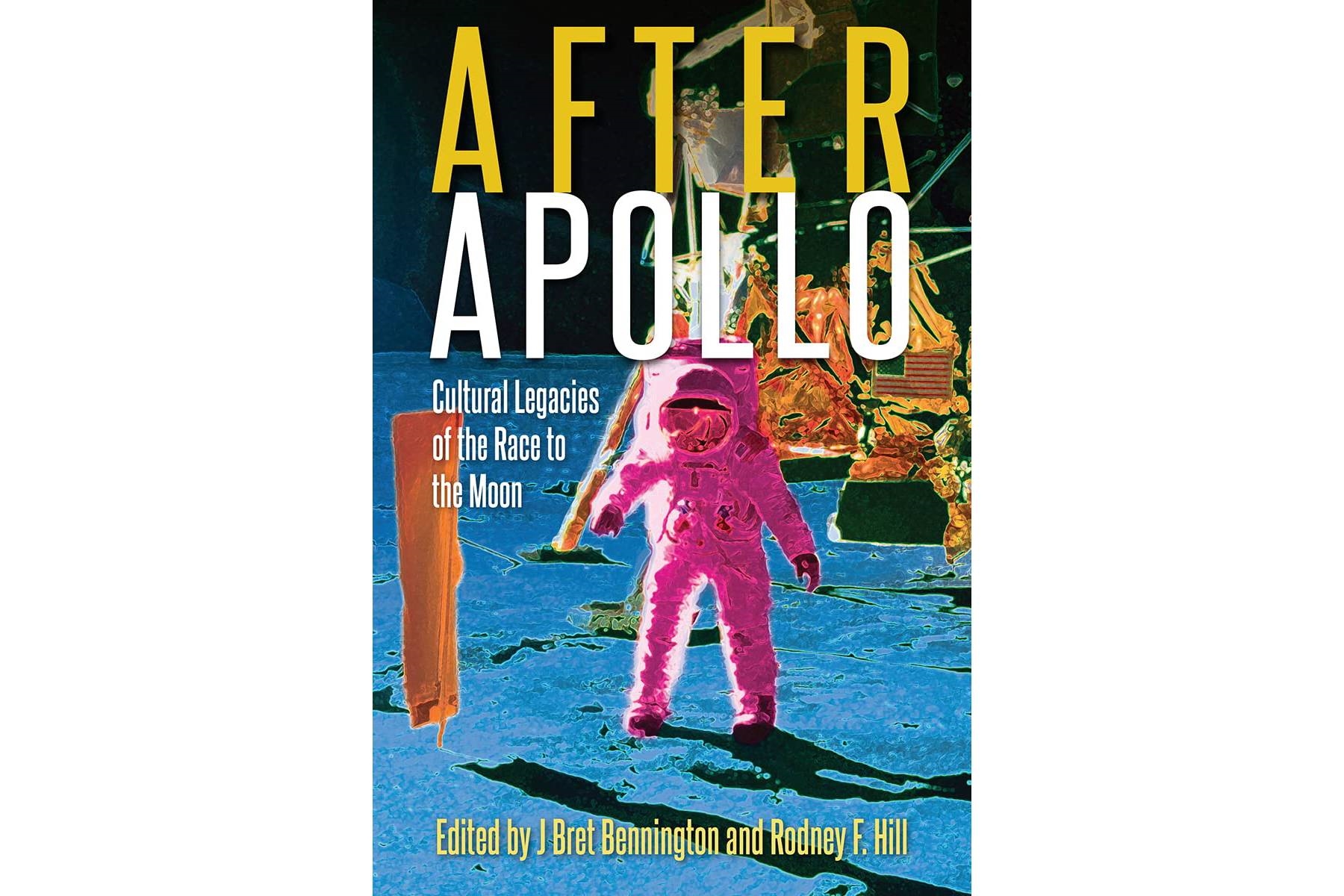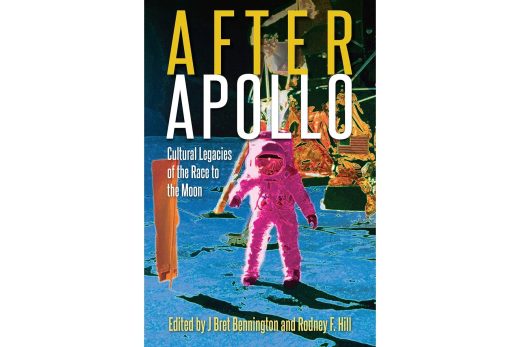Hitting the Books: How NASA helped JFK build his ‘Nation of Immigrants’
Hitting the Books: How NASA helped JFK build his ‘Nation of Immigrants’
The Apollo 11 moon landing was a seminal event in American history, one etched deeply into our nation’s collective psyche. The event ushered in an era of unbridled possibilities — the stars were finally coming into reach — and its effects were felt across the culture, from art and fashion to politics and culture. In After Apollo: Cultural Legacies of the Race to the Moon, a multidisciplinary collection of historians, researchers and academics explore the myriad ways that putting a man on the moon impacted the American Experience.
Excerpted from “Scientists Without Borders: Immigrants in NASA and the Apollo Program” by Rosanna Perotti from After Apollo: Cultural Legacies of the Race to the Moon, edited by J Bret Bennington and Rodney F. Hill. Gainesville: University of Florida Press, 2023. Reprinted with permission of the University of Florida Press.
Space Travel and the Immigrant Experience
From NASA’s very beginnings, immigrant engineers, scientists, and technicians lent their talent, labor, and technical skills to the space program. But space travel itself always represented more than a scientific endeavor. Human spaceflight was one of the “great dreams” of the 1960s, as space historian Valerie Neal reminds us, and as a “big idea,” spaceflight relied heavily on American cultural narratives. The Apollo program (1963–1972) conjured the image of pioneering the frontier in the 1960s—exploration and discovery were indispensable to America’s history and continuing redefinition, and Americans welcomed the frontier as a metaphor for space exploration (Neal 15). The shuttle program (1972–2011) echoed the narrative of Americans “going to work.” As the Apollo missions were replaced by the space shuttle, NASA supporters and commentators depicted the shuttle crews with imagery associated with blue-collar labor: “astronaut repairmen made service calls in a vehicle often called a space truck.”
Both of these narratives — “pioneering the frontier” and “getting the job done” — are closely associated with a third narrative that was becoming deeply ingrained in American national identity in the 1960s: the myth of the United States as a nation of immigrants and of the immigrant as the backbone of America’s egalitarian democracy. This American immigrant myth was not born in the nineteenth or even in the early twentieth century, when immigration was peaking and Congress struggled to impose limitations and quotas. The myth reached wide acceptance only in the early 1960s. It is no coincidence that John F. Kennedy presented the immigrant myth most succinctly in his pamphlet, A Nation of Immigrants, in 1963, as Kennedy was preparing to ask Congress to overhaul the nation’s immigration laws. At the same time, his administration was pressing furiously to put a man on the Moon by the end of the decade, a central goal of the New Frontier. Interestingly, Kennedy’s space proposals were a far more important policy priority for the administration than immigration reform (the latter was not accomplished until 1965, as we shall see later). But his articulation of the “nation of immigrants” narrative provided powerful imagery in support of the space program he championed from the start of his administration.
Kennedy’s articulation of the complex immigration myth featured not just a welcoming America, but an idealized immigrant, united with others by little other than a common love of freedom. Ours was “a nation of people with the fresh memory of old traditions who dared to explore new frontiers, people eager to build lives for themselves in a spacious society that did not restrict their freedom of choice and action.” Citing Tocqueville, Kennedy noted that immigrants’ very poverty made them more inclined toward egalitarian democracy. No arena of American life was untouched by the influence of immigrants, and immigrants themselves were paragons of self-reliance, ingenuity, entrepreneurship, and pioneer spirit. “It was the future and not the past to which he was compelled to address himself,” Kennedy wrote, describing the motivations of the nineteenth-century immigrant.
Except for the Negro slave, he could go anywhere and do anything his talents permitted. A sprawling continent lay before him, and he had only to weld it together by canals, by railroads and by roads . . . This has been the foundation of American inventiveness and ingenuity, of the multiplicity of new enterprises, and of the success in achieving the highest standard of living anywhere in the world.
The space program was the next frontier in the natural progression toward excellence. It evoked not only the immigrant’s capacity for adventure and discovery but also his practicality and capacity to work hard and tame his surroundings. From the time of the English settlers, who “fought a rugged land” in the words of Kennedy, immigrants had to overcome adversity to earn their fortunes and shape their environment. They had worked as artisans, provided cheap labor for American farms, factories, mills, and mines, and climbed the economic ladder to provide succeeding generations with educational opportunities. They had moved forward to get the job done. Launched under the motto “Going to Work in Space,” the space shuttle was a vehicle that could deliver satellites and repair them in orbit, carry commercial payloads, and support a research laboratory. Astronauts would carry out their work all but rolling up their sleeves as builders and repair technicians, wielding robotic arms and power hand tools. Businesses could use the shuttle as a workhorse to launch satellites or develop manufacturing capabilities. All of this economic productivity in space could be expected to resonate with a nation whose increasingly diverse immigrant workforce was transitioning to a new economy. American society was reflected not only symbolically but practically in NASA’s missions. They produced results that appeared almost impossibly ambitious. NASA represented excellence: the best work in the world. Space travel also mirrored some of the risks and hardships of the immigrant experience. As the American public began questioning the nation’s investment in space travel through the 1980s, advocates harked back to this part of the immigrant narrative. In the aftermath of the 1986 Challenger tragedy, the Report of the Advisory Committee on the Future of the US Space Program (1990) reminded Americans that acceptance and resilience in the face of failure were a part of America’s pioneer and immigrant legacies:
In a very real sense, the space program is analogous to the exploration and settlement of the new world. In this view, risk and sacrifice are seen to be constant features of the American experience. There is a national heritage of risk-taking handed down from early explorers, immigrants, settlers, and adventurers. It is this element of our national character that is the wellspring of the U.S. space program.

(6)



